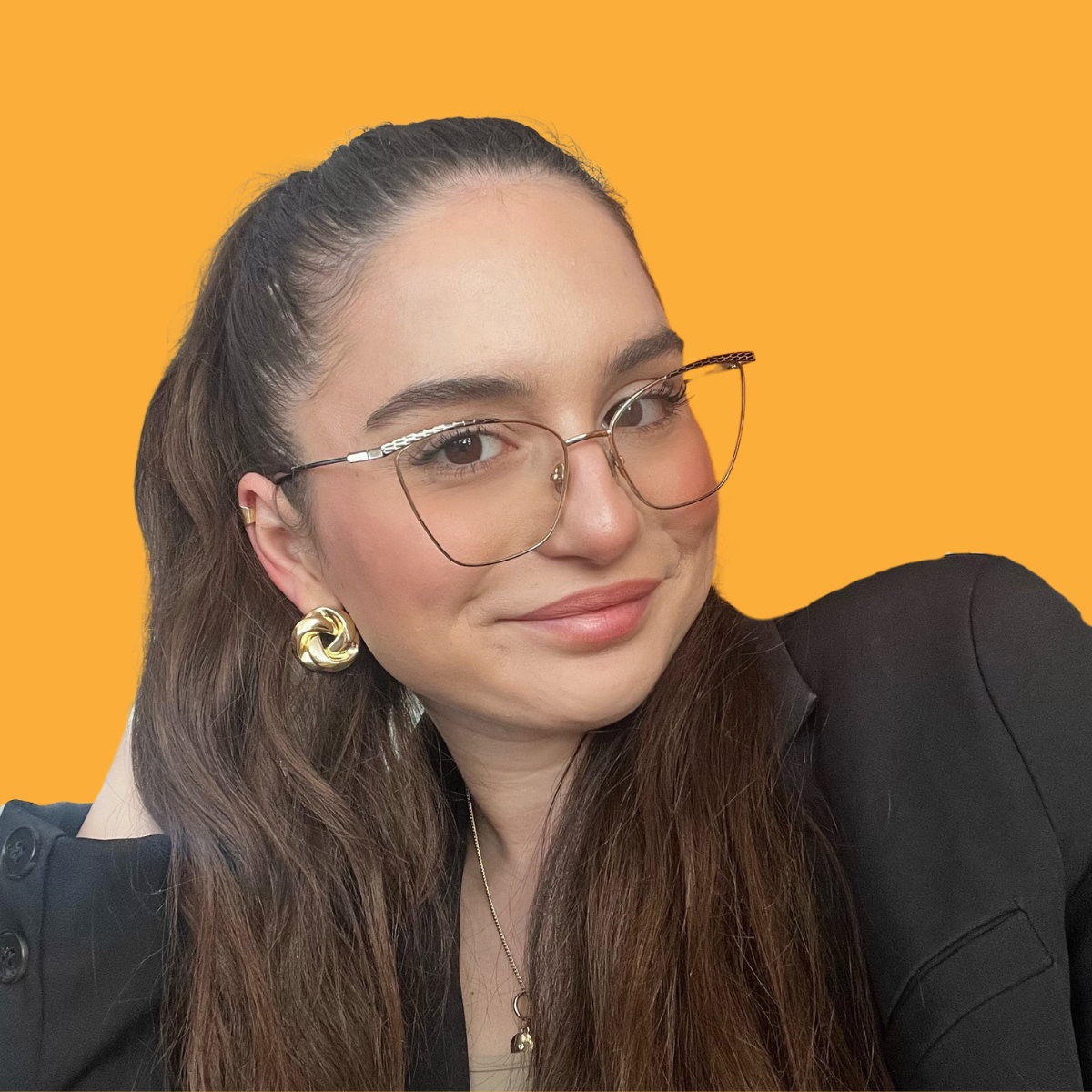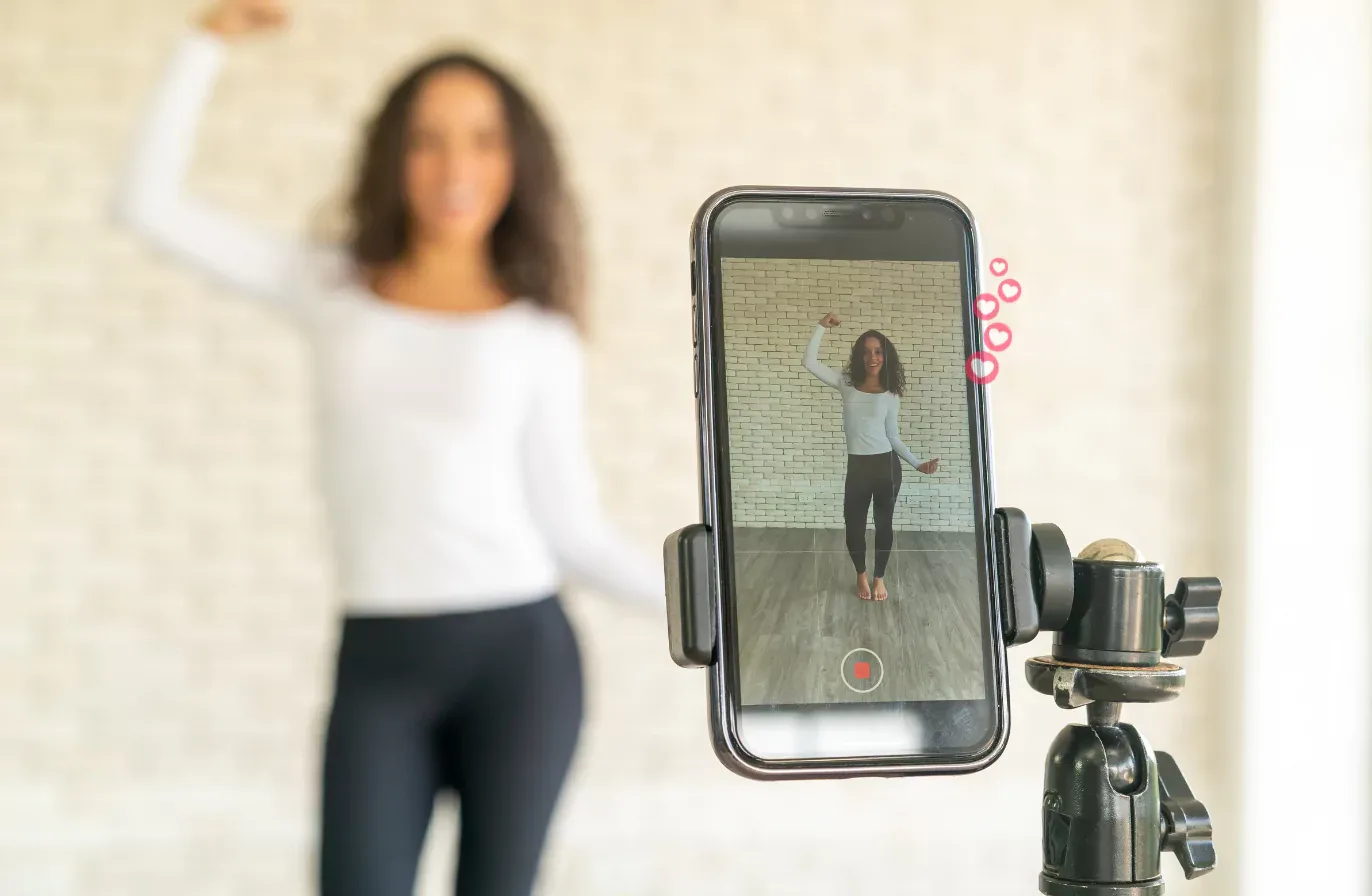15 Social Media Strategy Examples Showing What's Working On Social Today
Discover 15 social media strategy examples that will offer you insights into what's working in today's digital sphere for great results.
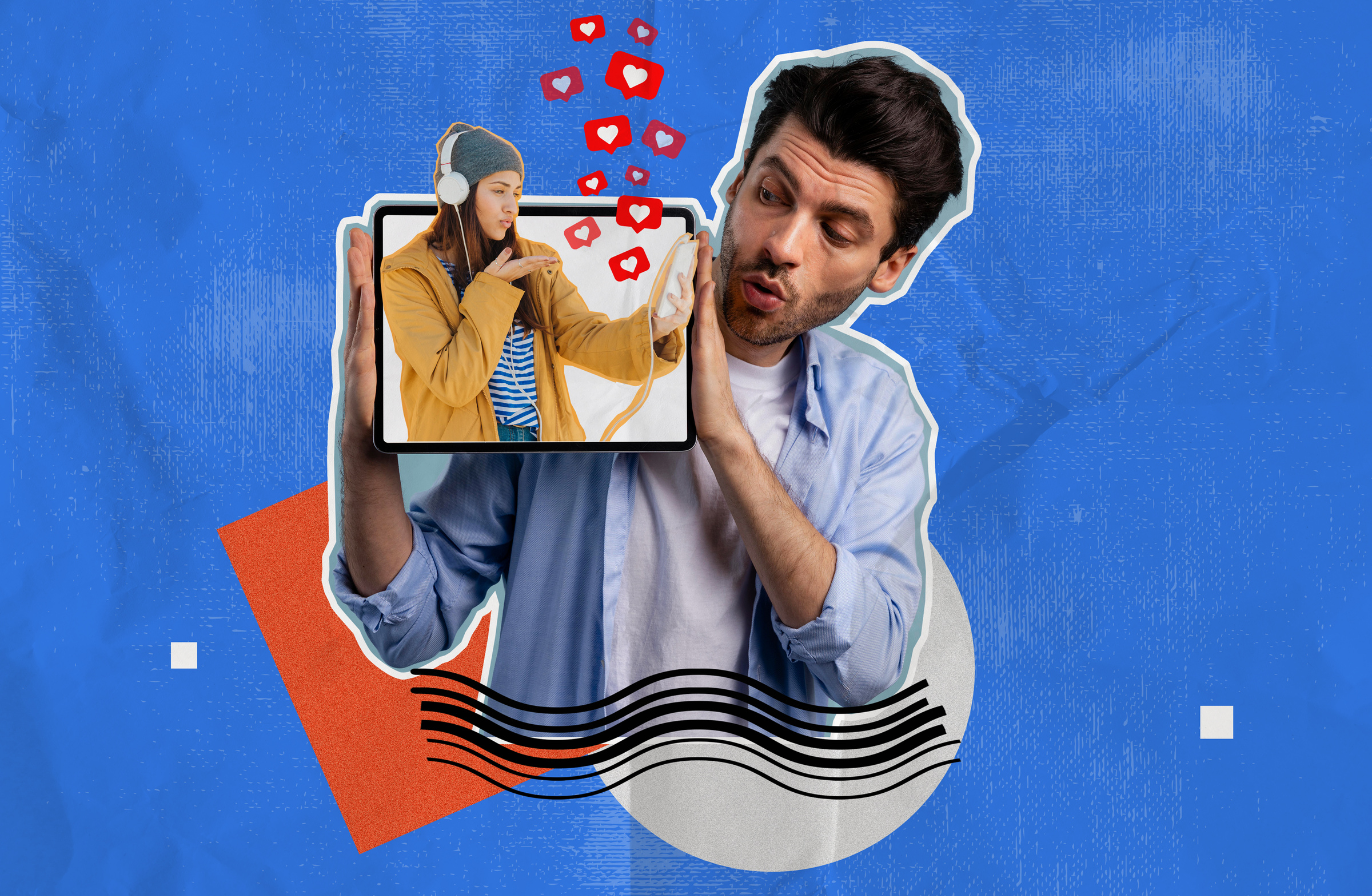
Looking to drive more traffic to your ecommerce store or raise awareness for your SaaS product? Every business has unique goals for social media marketing—whether it's growing an audience or boosting conversions.
In this guide, I'll share with you share 15 social media strategy examples from real brands to show how you can achieve your goals. Whatever goal you have in mind, we have a social media strategy example for that.
Let’s jump right in.
Key takeaways
-
Maintain a multi-platform presence to diversify your visibility and reduce reliance on any single channel.
-
Use zero-click content to boost on-platform engagement and earn more reach from platform algorithms.
-
Prioritize short-form and interactive videos to capture attention quickly and drive stronger engagement.
-
Incorporate AR or AI-powered experiences to help users try products digitally and reduce purchase friction.
-
Partner with influencers—especially micro or niche creators—to boost authenticity and reach.
-
Share cause-driven content to connect with value-driven audiences and strengthen your brand identity.
-
Collaborate with other brands to expand your reach and launch more creative campaigns.
-
Leverage UGC to build trust, show real product experiences, and scale your content output.
Why does effective social media marketing need a blend of several strategies?
Social media goals are often interconnected, and focusing on just one can limit overall success.
For example, a brand solely aiming to grow its follower count might attract a large audience but struggle with low engagement if those followers aren’t genuinely interested. Conversely, focusing only on engagement without expanding reach can lead to stagnant growth.
Using a mix of social media strategies for marketing, such as targeted ads to reach new users, storytelling to build emotional connections, and interactive content to boost engagement, ensures a balanced approach.
With this strategic social media marketing approach, you can not only attract a larger audience but also keep them active and interested.
Let’s go through the top 15 strategies for social media marketing to get you inspired.
#1. Leverage multi-platform and cross-channel marketing
Imagine you were only active on TikTok. Would you have gone into an anxious spiral with the news of TikTok ban in the U.S.? Probably. Putting all your eggs in one basket when it comes to social media is playing a dangerous game.
With the future of social media seeing new platforms on the rise, your brand needs to maintain an active presence wherever your audience is.
But the question that pops up is — how do small social media teams maintain a multi-platform social media presence? Won’t it take a lot of time and resources?
Cross-posting is your answer to all these problems. Instead of creating new content for Facebook, TikTok and Instagram, you can share similar content on multiple social media platforms.
Example: Nike
One brand that is great at social media branding strategies like this is Nike. Their cross-posting is focused on platforms that priortize similar content types.
For example, focusing on short-form videos on video-based platforms like Instagram Reels, TikTok, and YouTube Shorts.

Look at their YouTube Shorts and TikTok feeds, and you’ll find a lot of similar content.
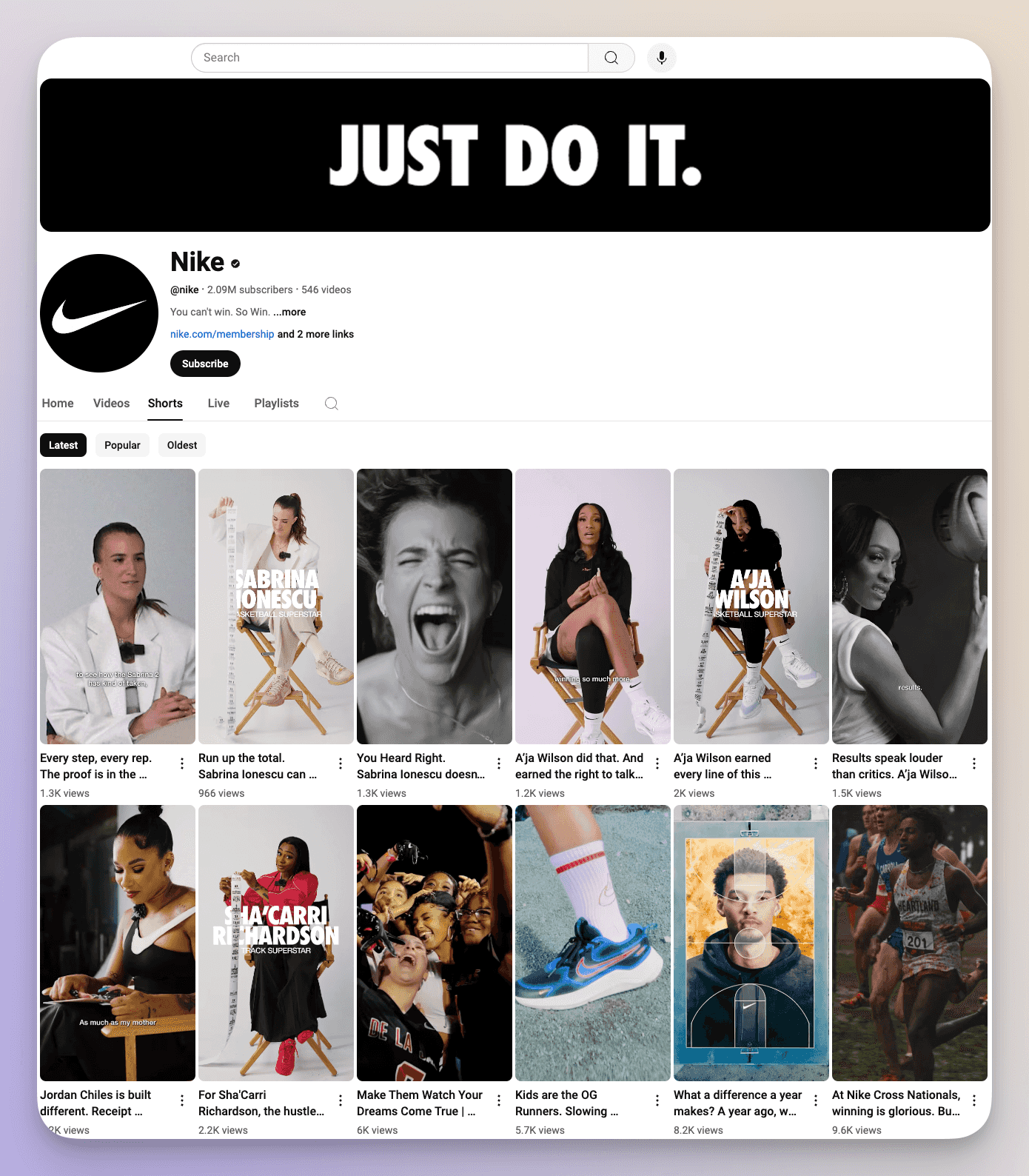
Nike focuses on short-form videos that dominate TikTok and Shorts while prioritizing high-quality visuals and storytelling for Instagram. This ensures maximum audience engagement.
#2. Implement social media SEO to maximize your brand’s visibility
SEO isn’t a best practice just when it comes to content marketing. Leveraging it for your social media posts as well can help increase the reach of your overall profile as well as individual posts.
Take this statistic from a recent Forbes survey — 24% of people primarily use social media to search for information. Another survey said that almost 40% of young people in the U.S. use TikTok or Instagram to find places for lunch instead of Maps or Google Search.
For example, when I search for “Chicago restaurants” on Instagram, I get many roundup posts related to it. Among this content, I also found many restaurant profiles that I can further check out.
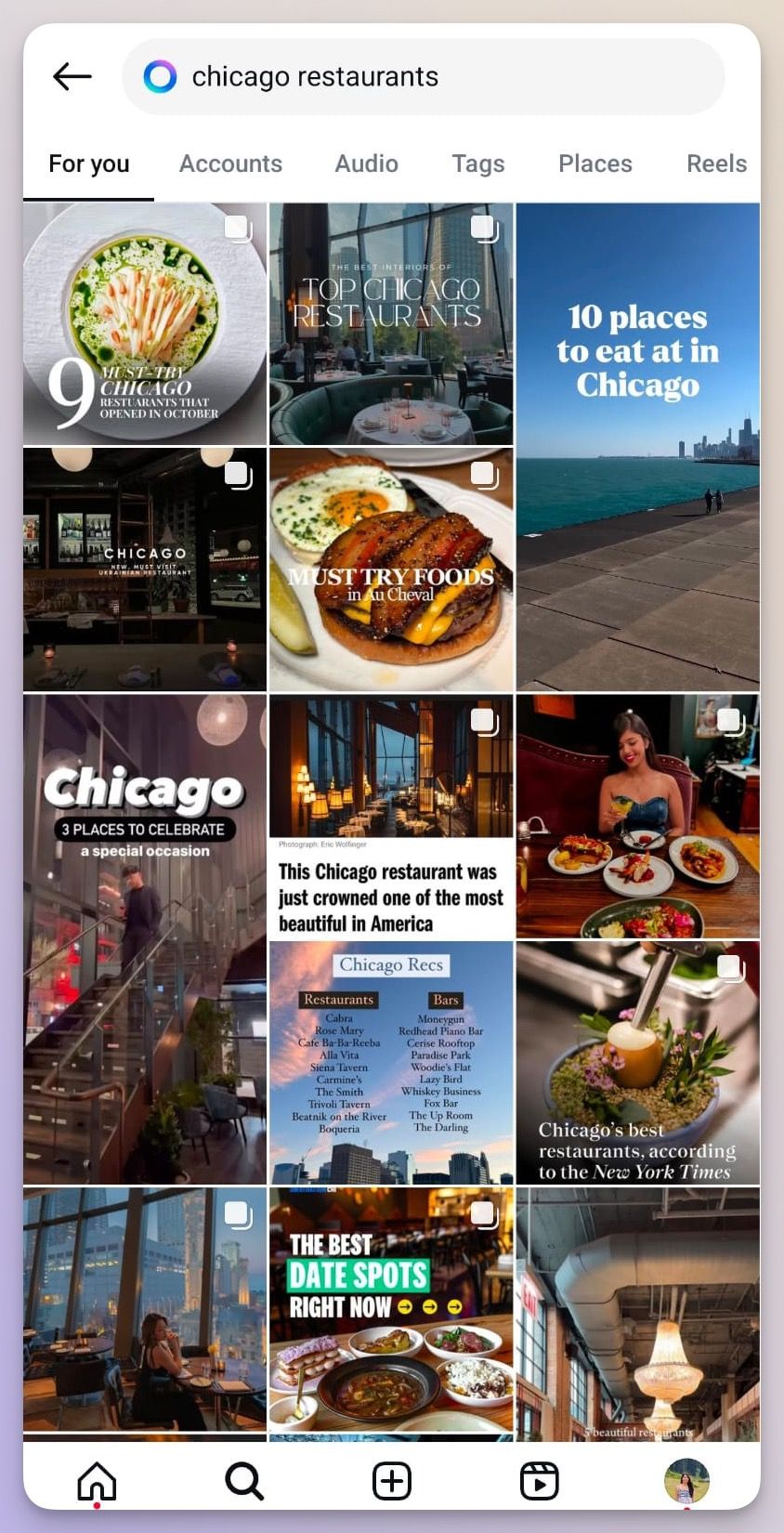
But how do you make sure your content/profile pops up in relevant searches? There are three ways:
- Use relevant keywords in your bio.
- Add keyword-rich descriptions to your caption.
- Use ALT text for creatives.
- Use hashtags strategically.
With social media SEO, you can also ensure that your profiles appear whenever someone searches for your brand on search engines like Google.
Example: Amex
American Express’ #AmexTravel is a hashtag social media campaign designed to engage travelers, promote exclusive travel perks, and position Amex as a premium lifestyle brand.
Through this hashtag, they promote cardholder benefits such as luxury stays, VIP upgrades, and other unique experiences.

When travelers and influencers create content using the hashtag, American Express often reshares these posts on Instagram, X, and Facebook, boosting social proof.
The hashtag now has over 19 million posts on Instagram.
With social media SEO, you can also ensure that your profiles appear whenever someone searches for your brand on search engines like Google.
#3. Integrate zero-click content into your posting strategy
Social media platforms prioritize keeping people engaged within their platforms. This is why algorithms tend to favor posts without external links (zero-click content).
It also benefits the audience as they don’t need to switch platforms and interrupt their scrolling.
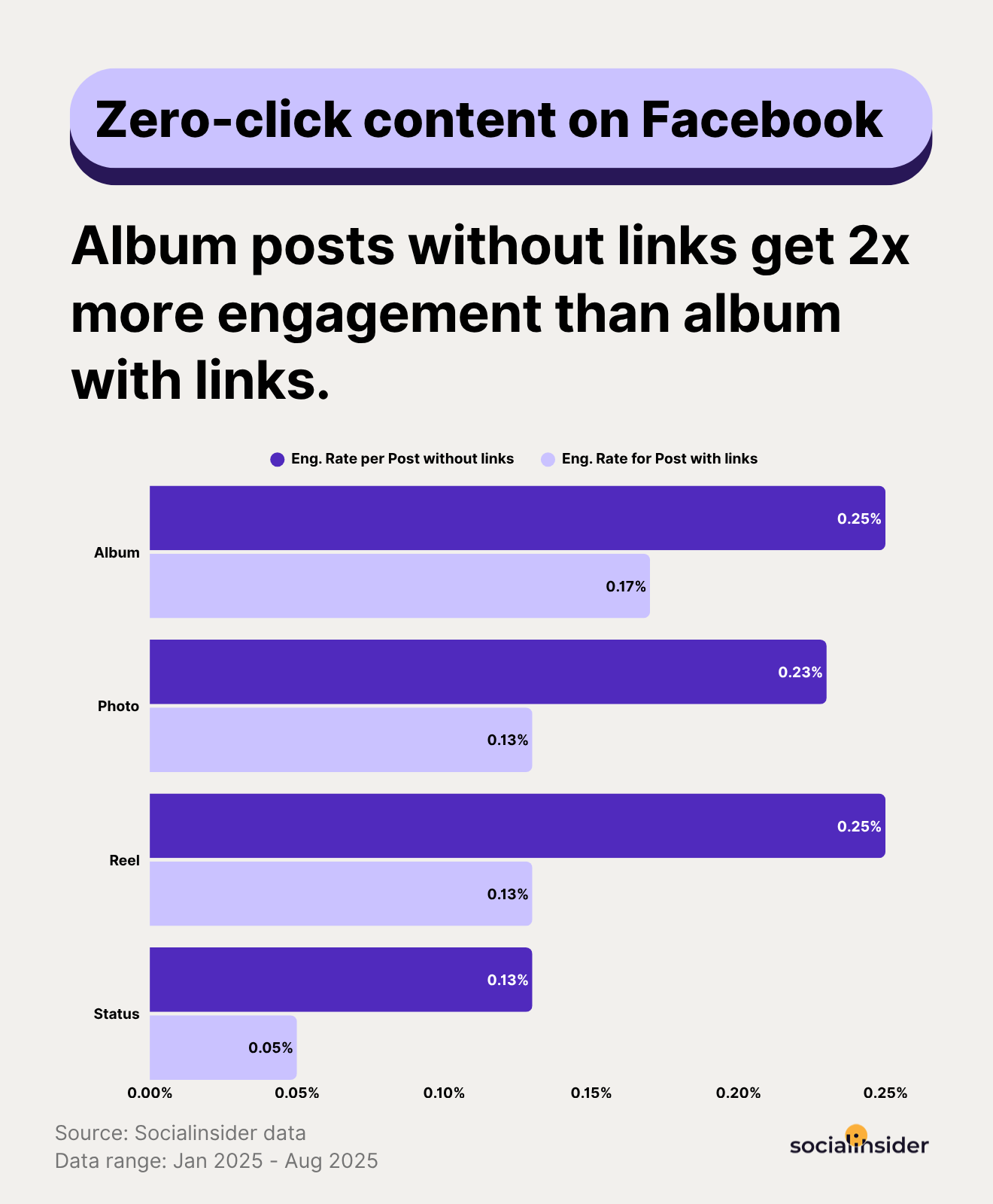
While creating zero-click content, ensure it captures attention and communicates value instantly. If it doesn’t do that, it won’t succeed.
Example: Socialinsider
We at Socialinisder try to provide as much value as we can to our social media followers without having them take too many steps to find information that might be precious to them.
Let's take a look at how we transformed the takeaways from the article related to social media predictions for 2025 based on data into a zero-click piece of content for LinkedIn.
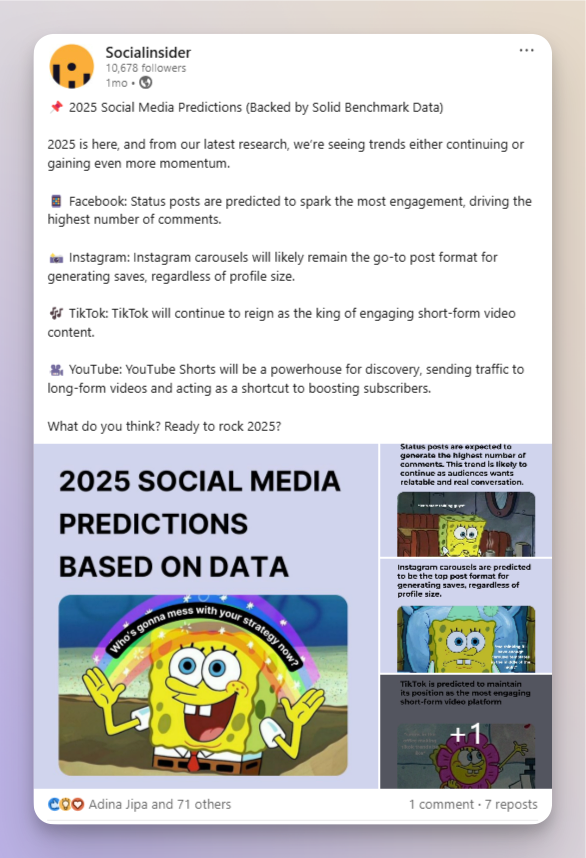
Here are some other best practices we implemented to make this zero-click content more successful:
- Start with a hook: To grab attention, we communicated that our predictions were based on solid data.
- Keep it concise and valuable: We provided the main findings from our data instead of overwhelming the audience with a lot of information.
- Use eye-catching visuals: Most social platforms prioritize visual content. So, we incorporated memes to enhance visual appeal and stop the scroll.
- Incorporate carousel posts: We used carousels to break down complex information into digestible, swipeable slides.
- Try to boost engagement: Instead of leaving them with just content, we included a clear call-to-action, such as asking a question or inviting users to share their opinions in the comments.
#4. Use short-form and interactive video content
When we interviewed social media experts for an in-depth blog on social media trends, one trend that surfaced was short-form video.
Today’s audience loves short-form content, and statistics say the same.
- Instagram users spend 50% of their time watching Reels.
- When users interact with brands on TikTok, they mostly engage with short-form videos.
- YouTube Shorts collectively average over 70 billion daily views.
This may be a big reason why platforms like TikTok, Instagram Reels, and YouTube Shorts are seeing an increase in engagement year over year.
If you are thinking of picking a platform to start, our research says it should be TikTok.
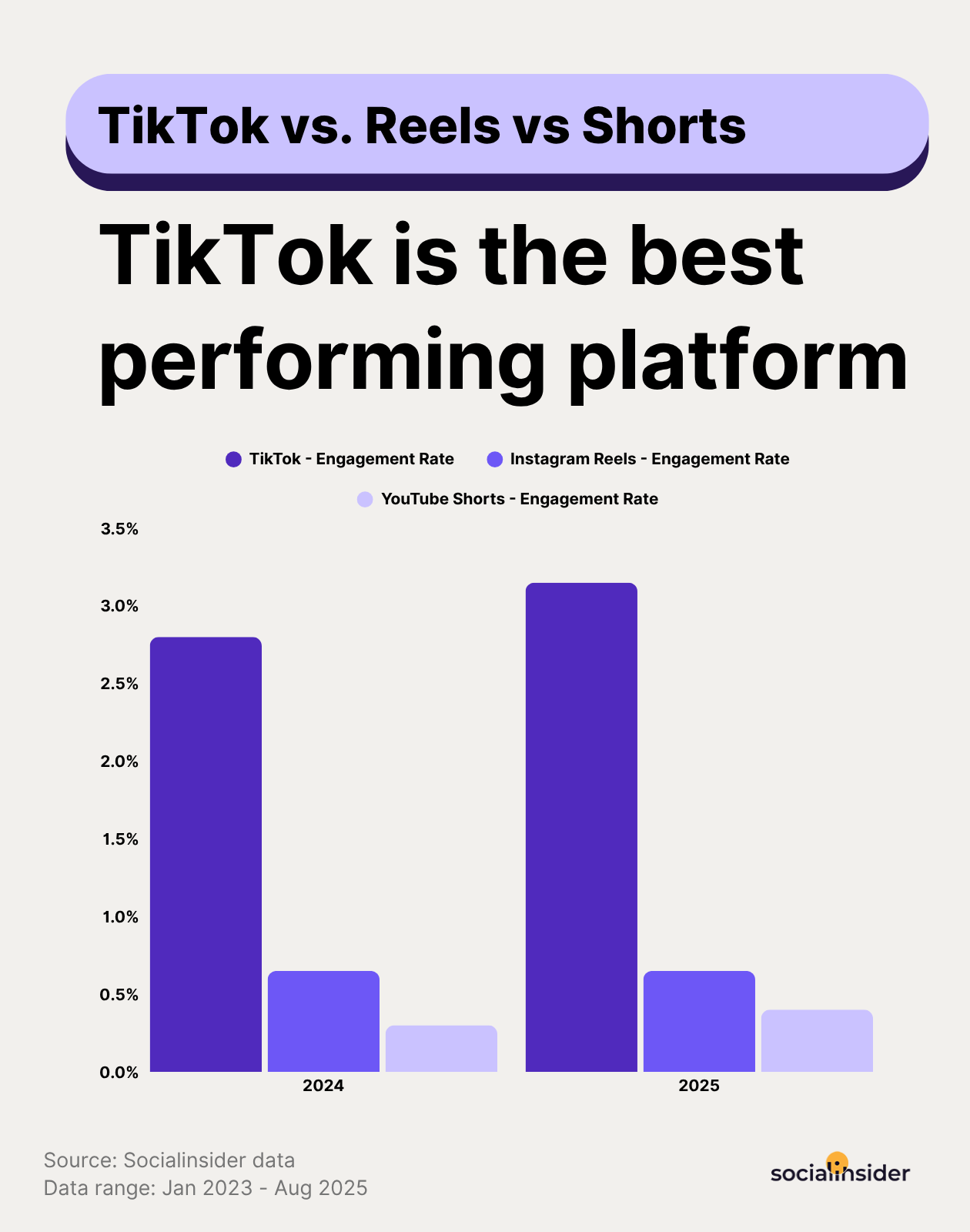
You can even focus on interactive videos, such as live videos. They are a great marketing tool since they give you the opportunity to connect with your audiences on a deeper level. Think about it.
Wouldn’t you like it if you could get the chance to ask people from your favorite brands questions in real time?
Example: Semrush
The perfect example of a brand that uses this social media marketing strategy is Semrush.
Their approach to video marketing focuses on education, industry trends, and direct interaction with their users.
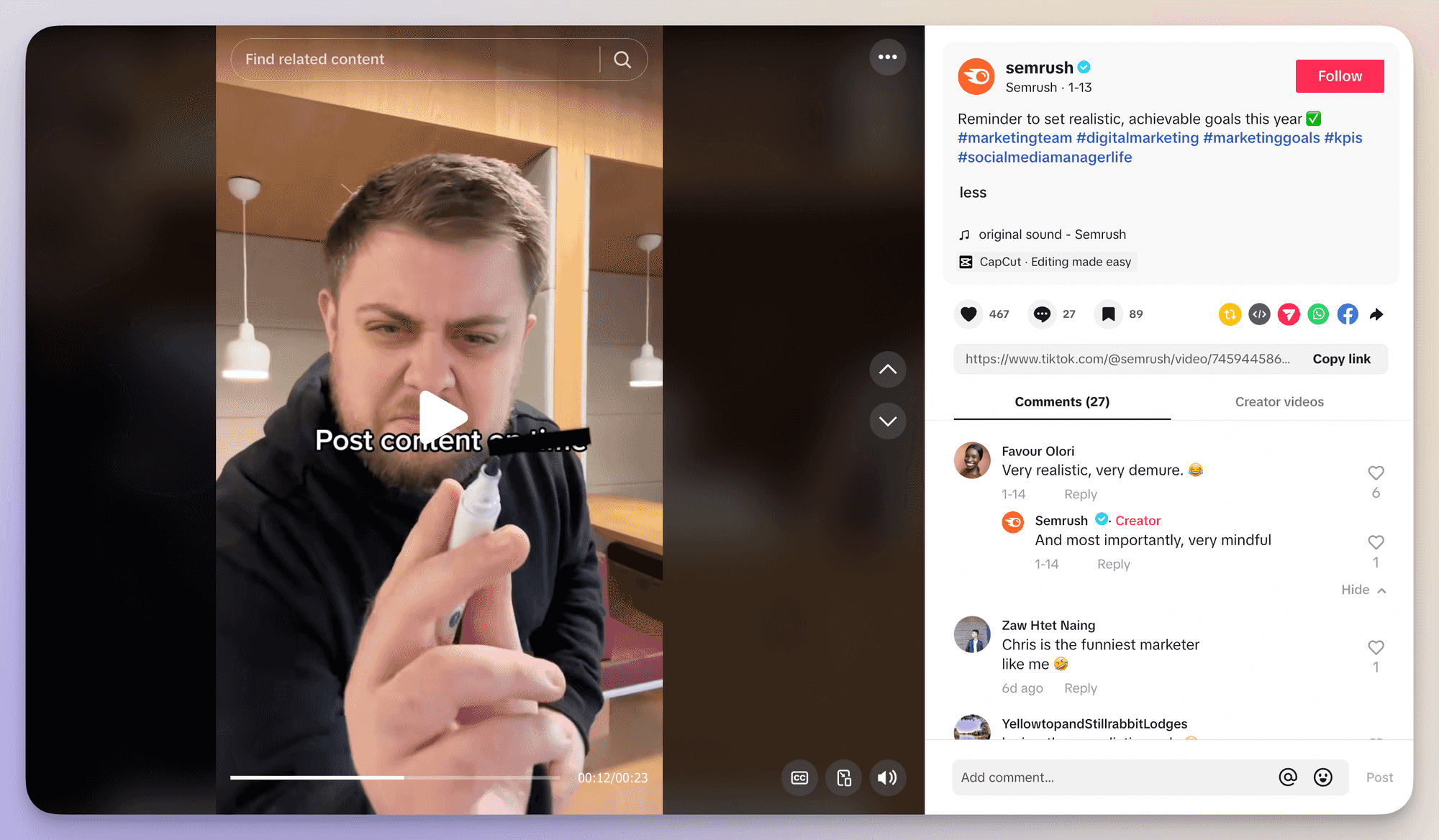
Also, when leveraging Facebook live videos, the brand also featured SEO experts, digital marketers, and industry leaders who provide real-time insights and actionable strategies for businesses and marketers.
#5. Make use of AI-driven personalization and automation
AI is making inroads everywhere. Even many strategies for effective social media marketing now include AI. It can handle all your routine tasks while you work on important things like generating content and building a successful social media strategy.
Think about this. 80% of millennials prefer to use social media for customer service over traditional methods like phone, web, or online chat. Instead of having someone answer routine questions over Instagram DM, or Facebook Messenger, why not use chatbots and AI assistants to handle FAQs?
Example: KLM Airlines
Here is how KLM Royal Dutch Airlines has strategically integrated an AI chatbot into their Facebook messages to quickly resolve common queries.
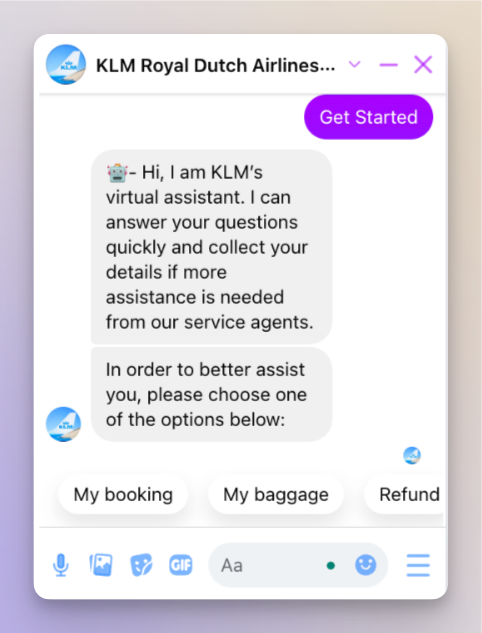
We will use this same example for an AI-driven social media analysis using Socialinsider. Through our AI content pillars feature, you can get insights into the content themes that KLM leverages across its social media channels.
How does it help? You can use the insights to discover the top-performing content pillars and prioritize them moving forward. You can even dig deep into the pillars not performing well and optimize or remove them.
Let’s analyze it for KLM.

According to this, the brand can focus its Instagram strategy around travel inspiration and prioritize TikTok as it’s their best-performing channel.
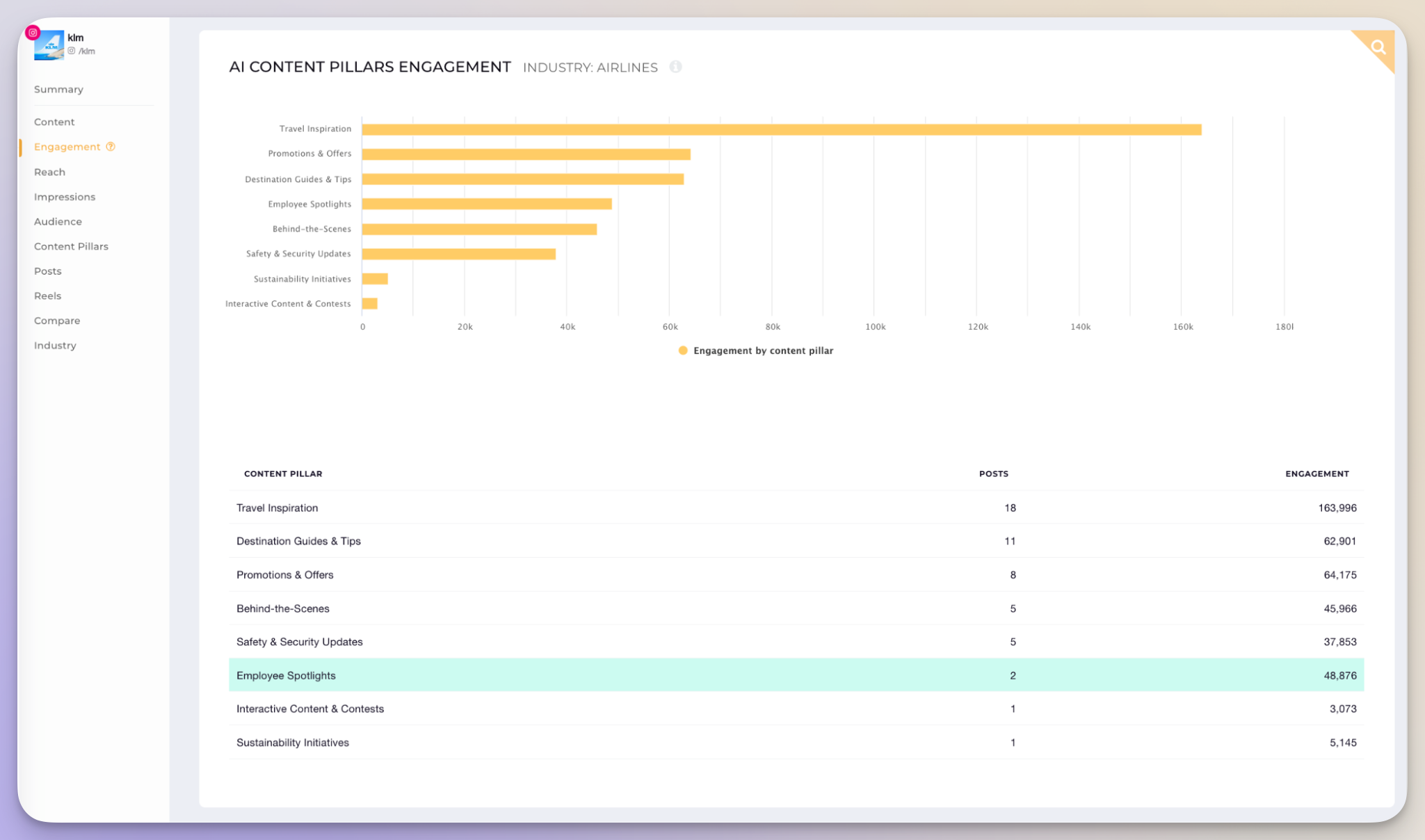
For Instagram specifically, a good content optimization idea might be to leverage more employee spotlights, given that engagement has been generated with only 2 posts belonging to this content pillar in the past 6 months.
Here's what Riley from ThinkJam, one of our customers told us in a customer interview, when asked why she chose Socialinsider: Socialinsider is the only tool that does this level of content analysis, like...automated content analysis.
And to that, Bethany from Listing Leads added: "It is pretty intuitive and easy to learn/easy to get set up and running."
#6. Optimize for search voices through conversational content
Whether you’re a beauty brand or a SaaS brand, you get a lot of questions your way. “How to use X feature?” “Why should we pick your brand?” “Which of your products is best suited for me?” and the list continues.
Instead of answering these questions individually, you can create social media content targeting FAQs. This way, you let your audience know that they are valuable to you and you’re listening to them.
Additionally, crafting content in a conversational tone helps optimize for voice search, as people tend to use natural, question-based language when speaking to voice assistants.
But how do you gather these questions in the first place? We recommend reaching out to people on your team who regularly communicate with customers. This could be your customer support team, digging through the questions your social media team receives on DMs, etc.
You can also leverage tools like social listening platforms or Q&A sites like Quora and Reddit to understand what your audience is asking online.
Once you’ve identified the questions, consider creating a variety of content formats, such as short explainer videos, carousel posts, or even bite-sized reels that directly address these queries.
Example: Adobe
Adobe is the best example for this. The brand's social media accounts oftently integrates tips and tricks coming from FAQS to offer helpful information for its community, being proactive in coming with solutions for its customer's and audience's potential struggles and problems.

#7. Create your own private social communities
A private community on social media promotes a sense of exclusivity and belonging. When you’re part of a brand’s private group, you gain access to valuable insights and content that are reserved just for members. This makes the experience feel unique and personalized.
This also creates a loyal customer base where people feel more comfortable sharing feedback, asking questions, and engaging in meaningful conversations.
Plus, when people feel like they’re part of something special, they’re more likely to stick around and even promote your brand to others. They’ll share their positive experiences and recommend your products, which is way more convincing than traditional ads.
Example: Peloton
Want to know how to leverage the power of a community? Take Peloton’s example. Peloton is an exercise equipment and media company. One of their social media marketing strategies is to leverage a private community where they try to bring immersive and challenging workouts into people’s lives.
The company tried to build a “cult” following of devoted fitness enthusiasts. One solution they adopted was to build a private Facebook group for Peloton members. This group has now grown to over 480K members.
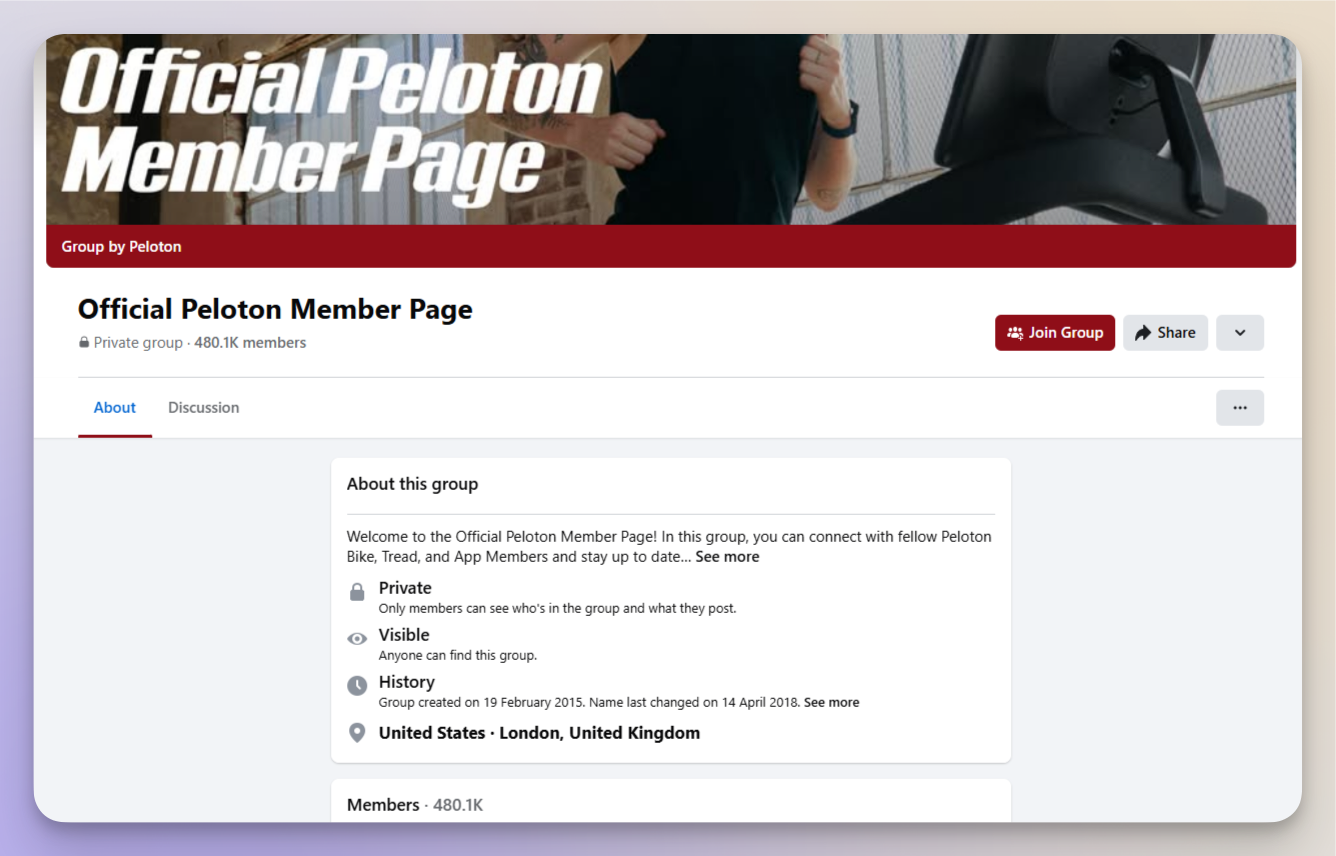
This private Facebook group lets users share workout experiences, celebrate milestones, and offer support to each other.
It fosters a sense of belonging, motivating members to stay engaged with the brand and its products. What’s more? It provides Peloton with direct feedback and insights, helping them focus on tailor-made workouts and offerings.
#8. Leverage AI-generated and augmented reality (AR) experiences
What if you could see how a piece of furniture would look in your living room? Or how a lipstick shade would make you look all glam? This is now possible with AR-powered filters and lenses on social media.
Over 1 billion people use AR features on social media, and conversion rates increase by 90% for consumers engaging with AR compared to those who don’t.
Whether it’s TikTok where you can add overlays and interactive elements to your video, or Pinterest where you can use their “Try-on” feature, most social platforms are now promoting the usage of AR.
Example: Fenty Beauty
Here’s an example of Fenty Beauty has integrated an AR filter, allowing users to find their foundation shade.
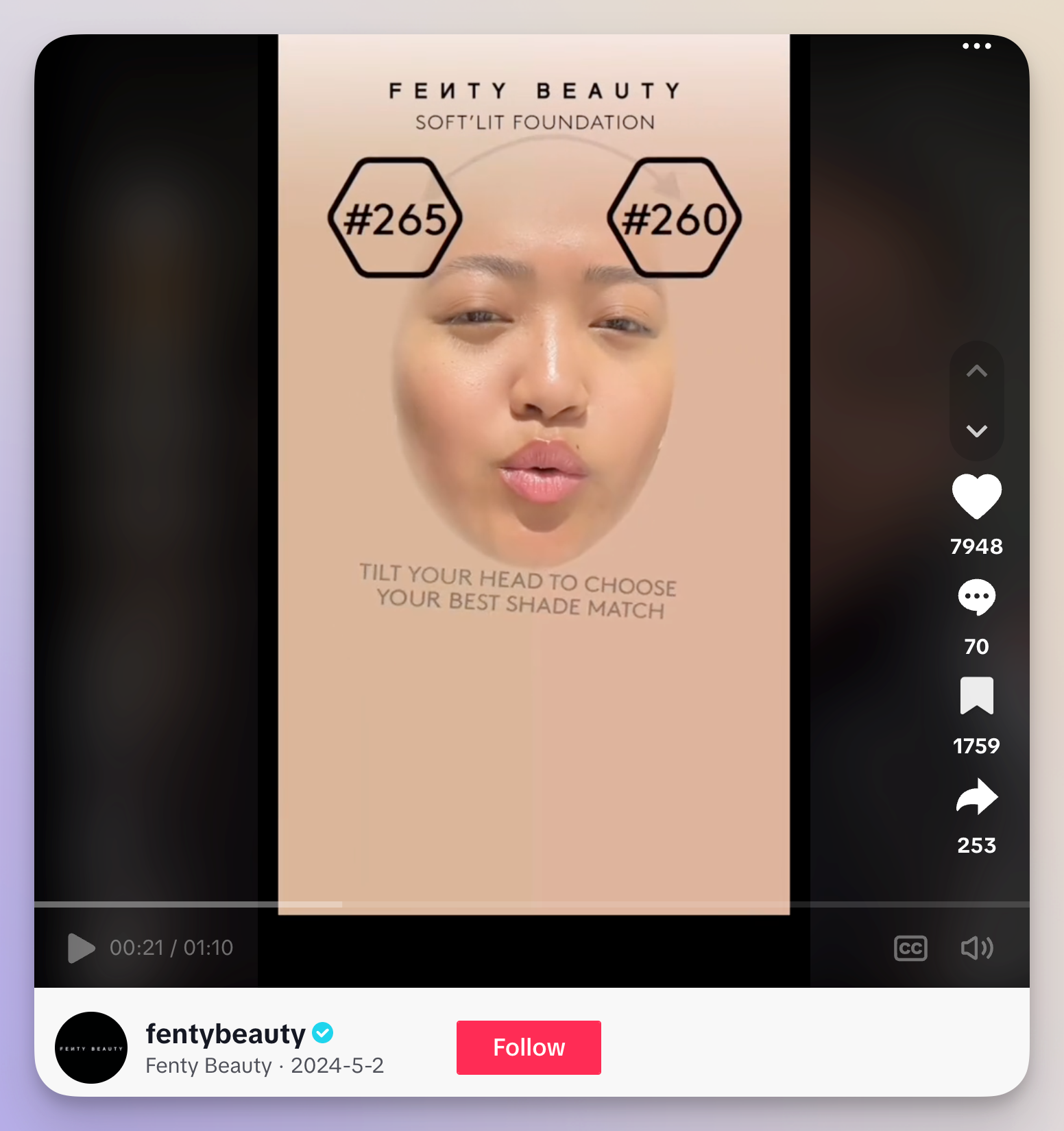
How did this help Fenty Beauty? The feature helps them promote their vast range of foundation shades, and it removes friction from the purchase. Instead of having to go to a physical store to find the right shade, users can find it from the comfort of their homes.
Not only that, once a user finds their shade, they can directly add the product to their cart, making the buying process much quicker.
Leveraging AR also strengthens Fenty Beauty’s reputation as a tech-forward beauty brand.
#9. Create hyper-personalized ads
Imagine you’re scrolling through Instagram, and you see an ad that feels super relevant. It’s for a pair of sneakers in your favorite color, exactly the style you’ve been looking at on a few shopping sites recently. The ad says, “Just for you—20% off on your favorite sneakers! Only today!”
You didn’t search for these sneakers on Instagram. But the ad is spot-on. It feels less like an ad and more like a personalized recommendation from a friend who knows your preferences. That’s what hyper-personalized ads can do.
These ads are relevant because they take data into consideration, like behavioral data (searches, clicks, purchase history), demographic data (age, gender, location), and psychographic data (user interests, lifestyle).
Social media makes this possible. For example, Facebook’s dynamic ads allow brands to retarget users with the exact products they viewed on their website, including personalized product descriptions and pricing.
One type of social media advertising strategies that’s gaining popularity is interactive ads. These types of ads engage users by encouraging them to take action, such as swiping, tapping, answering a poll, or playing a mini-game.
They go beyond passive viewing, creating two-way communication.
Example: AppLovin
For example, AppLovin helps its users create interactive ads with AI advancements. When Unico created top-performing playable ads for its game “Brain Test”, they boosted install volume by 230%.
These interactive ads are being used by hundreds of businesses today, and they’re a big reason why Unico grew to revenue of $1.37 billion, a 44% growth rate from a year prior.
#10. Collaborate with influencers
Think influencer marketing isn’t as effective anymore? We believe otherwise. The market size of influencer marketing is only growing. That, too, with a CAGR of 33.11%.
This shows that influencer marketing is one of the most successful social media strategies.
While influencer marketing is growing, the trend of partnering with celebrities and macro influencers may be shifting.
Brands are collaborating more with micro and nano influencers. The main reason? These influencers often have close-knit niche audiences, which results in a higher engagement rate than celebrities.
People also find these influencers more genuine and trustworthy, leading to an uptick in conversions.
Also, influencer marketing can also be done through different approaches, such as co-creation or account takeovers.
One interesting trend I discovered recently was brands collaborating with virtual influencers. These virtual influencers are digital characters designed to look and behave like real people on social media. They are entirely computer-generated, with their appearances, personalities, and lifestyles crafted by creative teams or artificial intelligence.
Example: Samsung
Samsung is the best strategy example for this trend. During the Galaxy S22 launch campaign titled “The Samsung Metaverse Selfie: A Live eCommerce Experience”, they featured a virtual influencer called Zero. The live shopping experience was co-hosted by TikTok creator Liam Kalevi.
The event utilized real-time rendering technology to integrate Zero into the live stream, creating an interactive experience that bridged the virtual and physical worlds.
The result? A 794% increase in sales compared to the previous year’s phone launch. What’s more? The campaign also garnered attention from major publications, including AdWeek, Bloomberg, Yahoo Finance, and The Drum.
#11. Leverage social impact marketing
91% of consumers are more likely to buy from a brand that supports social or environmental issues. Think about it. If the prices and products from two brands are quite similar, but one is very vocal about the causes you support, wouldn’t you side with that brand?
With increasing competition in almost every niche, this could be a factor where you stand out.
Cause marketing campaigns typically involve donating a portion of sales to a cause, creating awareness campaigns, or organizing events to support a social issue.
Example: Patagonia
A good example of a brand that does cause marketing well is Patagonia. The brand consistently shares content highlighting its commitment to environmental causes, reinforcing its brand values, and resonating with eco-conscious consumers.
For example, in this post, the brand shares how they donate 1% of each sale to environmental non-profits. And how it is followed by investing in urgent environmental fights as well.
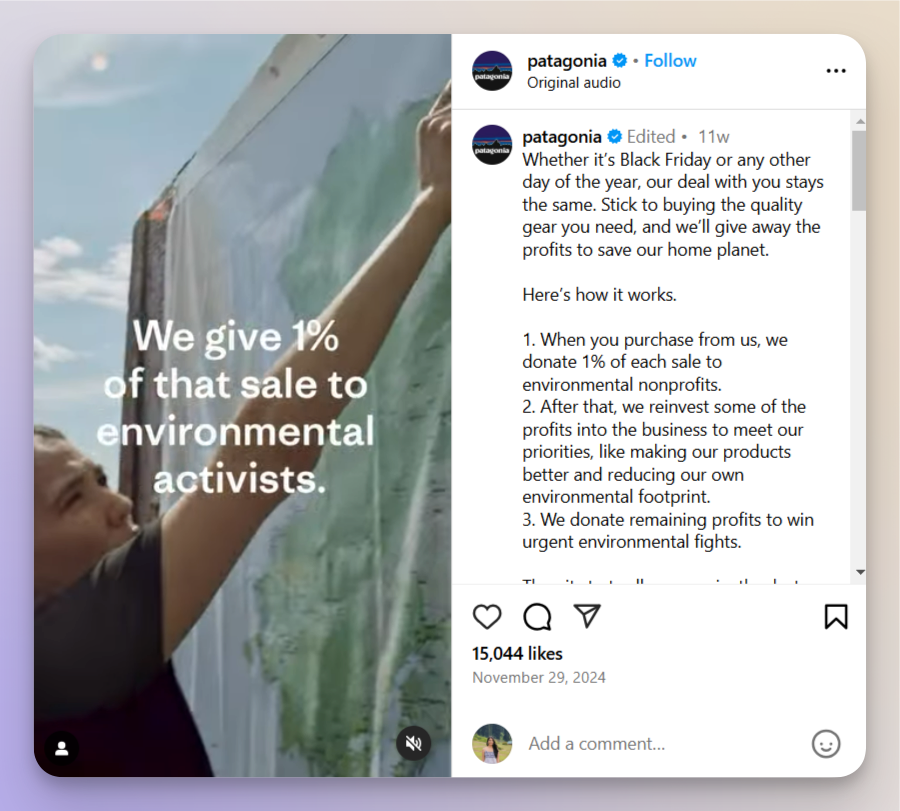
Not only this, if you check their Instagram bio, you’ll find a clear representation of what their brand stands for.
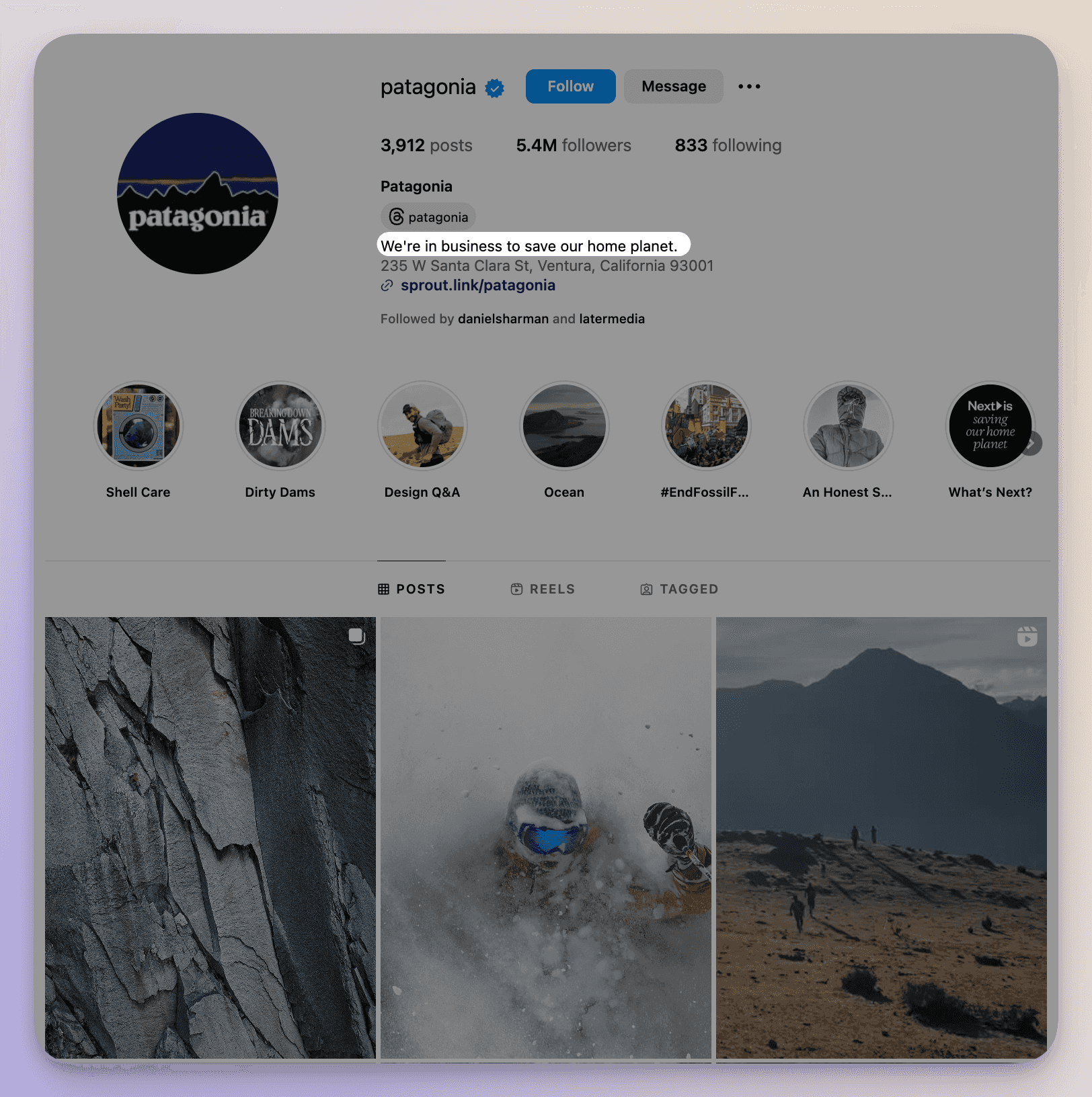
All of this has a direct impact on customer retention and even sales.
For example, one year after Patagonia urged consumers to buy less, sales surged by nearly one-third, reaching $543 million.
The following year, the company saw an additional 6% growth in revenue, bringing it to $575 million. This proves that well-executed cause marketing could be one of the best social media sales strategies.
No wonder Patagonia’s CEO, Rose Marcario, said, “Any time that we do something good for the environment, we make more money.”
#12. Partner with other brands
Can 1 + 1 be greater than 2? With a well-executed brand collaboration, yes. Brand collaborations can be one of the best social media initiatives because:
- You can expand your reach by tapping into your partner brand’s audience.
- Produce ambitious and creative marketing campaigns that otherwise would have been beyond your marketing budget.
- Increase credibility by partnering with a trusted and respected brand.
The different types of content you can create with brand partnerships are co-branded product collaborations, social media challenges, content swaps or takeovers, and giveaways or contests.
Example: Chipotle and elf cosmetics
e.l.f. Cosmetics and Chipotle collaborated on a limited-edition makeup collection inspired by Chipotle’s menu. The collection featured an eyeshadow palette with shades resembling ingredients like guacamole and beans, a hot sauce-inspired lip gloss, and an avocado-shaped makeup sponge set.
In response, Chipotle even introduced a special burrito bowl designed by e.l.f. The partnership resonated with Gen Z and Millennials, generating massive social media buzz, especially on TikTok and Instagram.
The result? The collection’s limited availability created urgency, leading to a quick sellout.
#13. Ask for your community’s feedback
77% of customers view brands more favorably if they proactively seek and apply their feedback.
Asking for your community’s feedback isn’t just about engagement. It’s about building a two-way relationship.
When brands use polls, questions, and open-ended prompts, they create an interactive experience that boosts key engagement metrics like comments, shares, and likes—signals that social media algorithms favor.
Community feedback can provide direct insights into what your audience likes, dislikes, or wants more of. This can help guide future content, product development, or strategies for social media marketing in a way that resonates with your audience.
Example: Canva
For example, Canva uses polls to gain insights into how university students utilize its platform, helping the brand better understand their needs and refine its features accordingly.
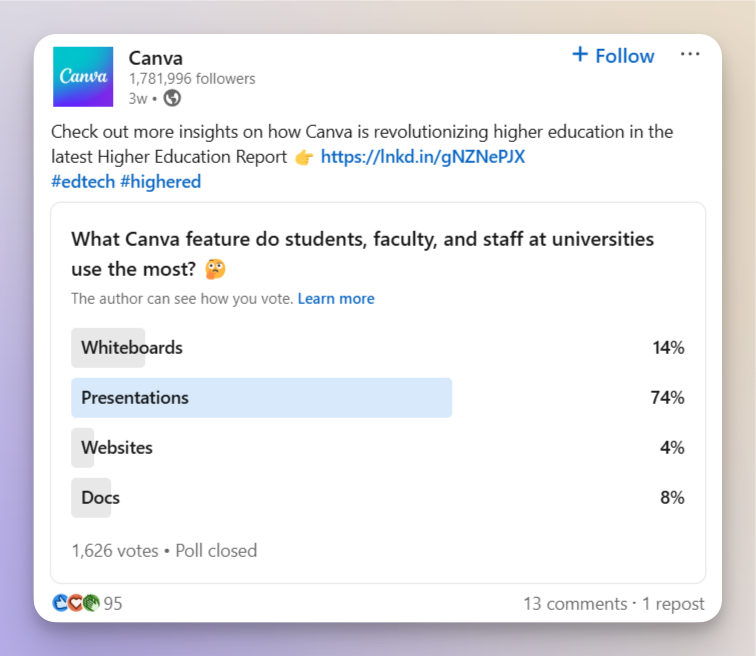
For example, after learning that “Presentations” was the most utilized functionality, they could focus on targeting this feature when creating content for universities.
Not only that, but Canva also mixes it up with opinion-based polls. For example, “What’s your go-to design style?” This encourages community participation and keeps the brand at the forefront of the audience’s minds.
#14. Host contests, challenges, and giveaways
Everyone loves winning, especially the contests held by their favorite brands. Contests and giveaways help you engage your audience and generate buzz around your brand.
These contests receive 3.5 times more likes and 64 times more comments than regular posts.
And what’s more? The same research says that the brands that host these contests grow 70% faster on Instagram.
This isn’t surprising when you consider the reasons behind it. These contests often involve minimal requirements, like tagging friends, sharing posts, or following the brand’s account to enter. This naturally leads to an increase in followers, which grows the brand's social media presence.
Instead of running the same like/comment/share contests, we suggest adding a fun spin to it where audience engagement is more active and beneficial.
Before you launch your contest or giveaway, here are three quick suggestions.
- Set clear goals and rules: Define what you want to achieve (e.g., brand awareness, engagement, lead generation) and outline the entry requirements, deadlines, and winner selection process.
- Know your audience: The contest and reward should align with your brand and audience interests.
- Make participating simple and engaging: Keep the entry process easy and exciting, especially for a giveaway. The fewer steps required, the higher the participation.
Example: Booking.com
For example, look at how Booking.com invited people to share their travel videos and win $500 if the brand decides to use it.
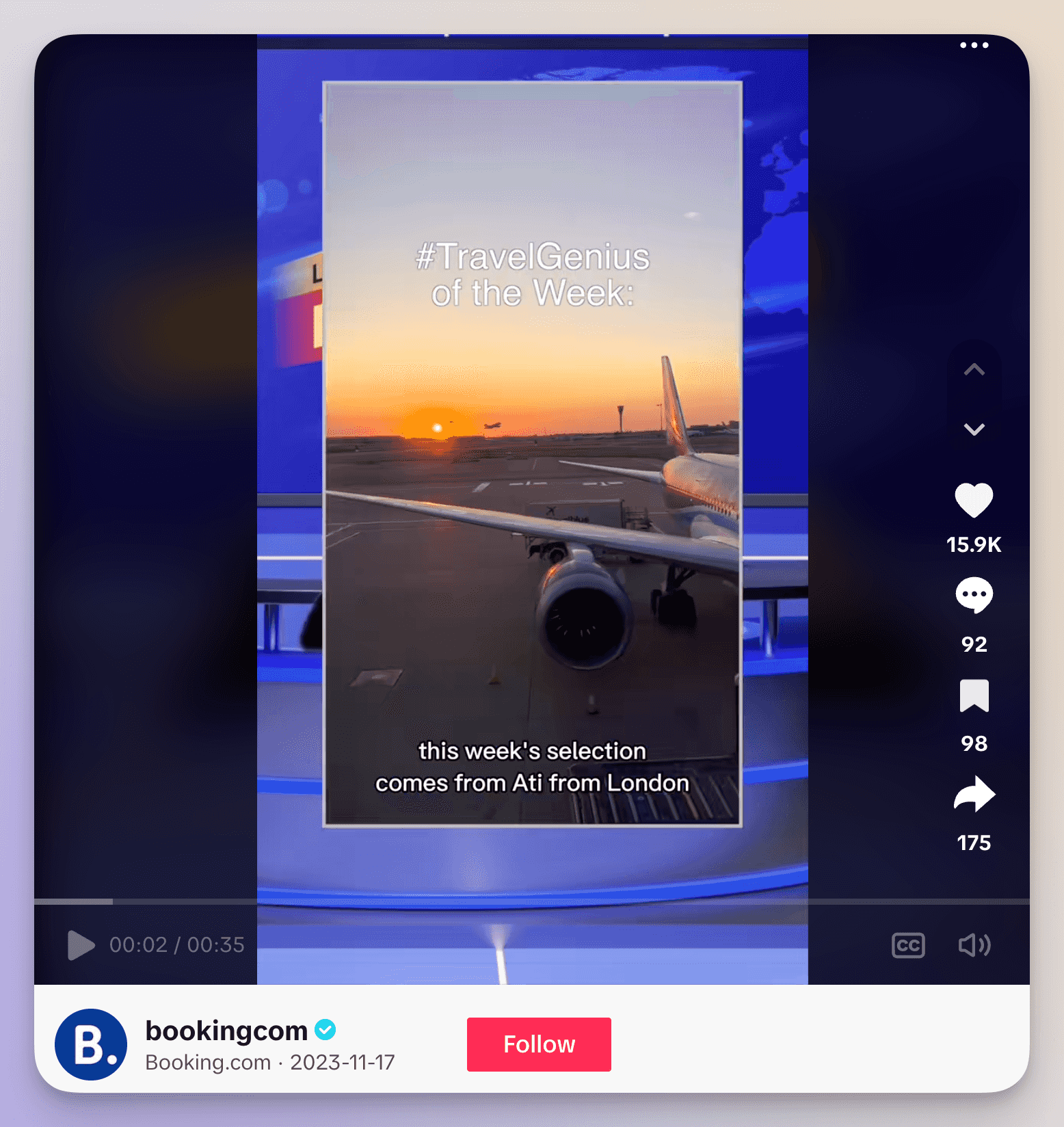
This resulted in over 1000 videos on TikTok and over 25K posts on Instagram with the #TravelGenius.
This contest worked well for two reasons:
- Instead of just posting one or two entries, they featured contestants every week. This increased awareness about their contest and invited more participation.
- They used the campaign to highlight trending destinations, seasonal travel ideas, and hidden gems. This aligns with Booking.com’s broader marketing efforts to drive bookings.
#15. Integrate UGC into your content
Different brands have different approaches to social media. But one thing common among all popular brands is UGC. Think of your favorite brands, from all sorts of industries. Be it Apple, GoPro, or Glossier, their feed is filled with user-generated content.
Instead of brands talking about themselves, people like consuming content that is created by real people. A reason why people find UGC more authentic, relatable, and powerful.
In fact, UGC (33%) ranked first among content types that generated the most customer trust, beating professionally shot content (24%) and even influencer-generated content (18%).
It also works great as social proof, encouraging more people to trust your brand and buy your products.
To get more people to create UGC for your brand, here are four things you can do:
- Create a branded hashtag – Encourage users to post content using a unique hashtag. Example: Nike’s #JustDoIt moments.
- Feature customer content – Reshare top-performing user posts on your own social media pages.
- Run UGC contests – Offer prizes for the best customer-created content, boosting participation.
- Engage & reward creators – Acknowledge and appreciate users who create great content for your brand.
Example: GoPro
Would you believe it if I told you that GoPro’s three most popular TikTok videos are all UGC? Take a look at this video generating 90.6M views, 11.7M likes, and over 113K likes.
If you look at the GoPro app, you will see how easy GoPro has made it for users to edit the content they shoot and upload it to social media directly from the app. This reduces the friction of saving the content to the phone’s camera roll and then uploading it to social media.
They also incentivize UGC by hosting challenges that reward creators with gear, exposure, and cash.
You’d be surprised to know that today, the brand manages to post 4X times more than its competitors, all because of UGC.In fact, more than 50% of GoPro’s video content, 40% of its imagery on GoPro.com, and 80% of its social media photo content is all UGC-sourced.
Final thoughts
Now that you know the different marketing strategies for social media and its corresponding examples, it’s time to put that inspiration to use.
If you are looking for a social media tool that makes tracking your strategy performance easy, get started with your free trial of Socialinsider.
FAQs on social media strategy examples
Analyze your competitors in seconds
Track & analyze your competitors and get top social media metrics and more!
You might also like
Improve your social media strategy with Socialinsider!
Use in-depth data to measure your social accounts’ performance, analyze competitors, and gain insights to improve your strategy.


